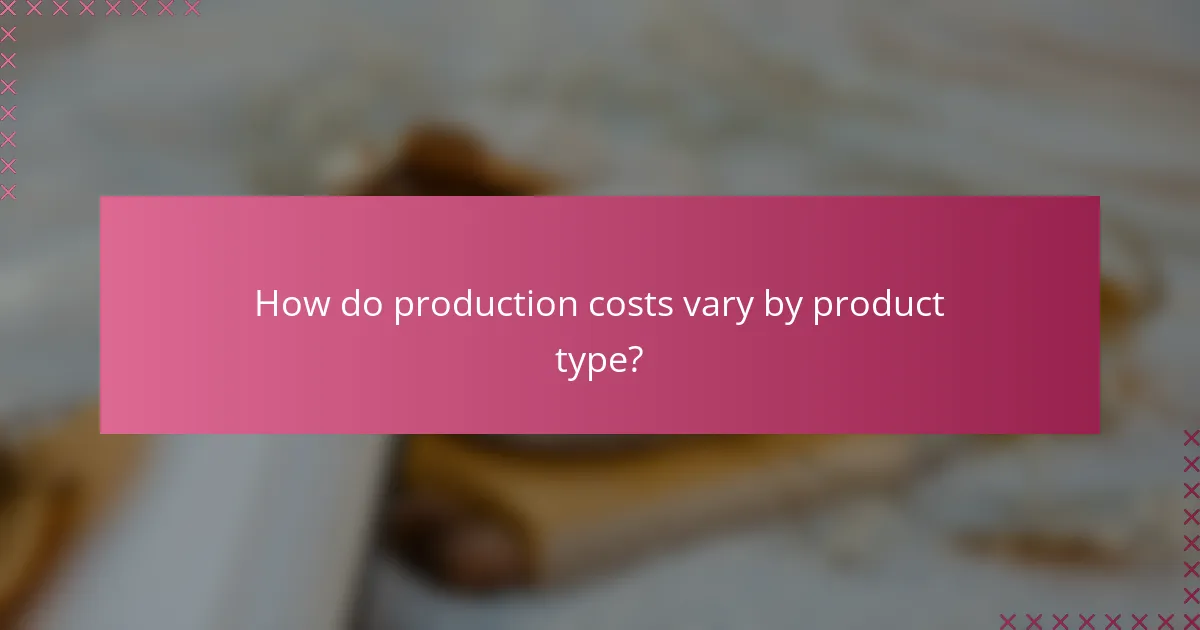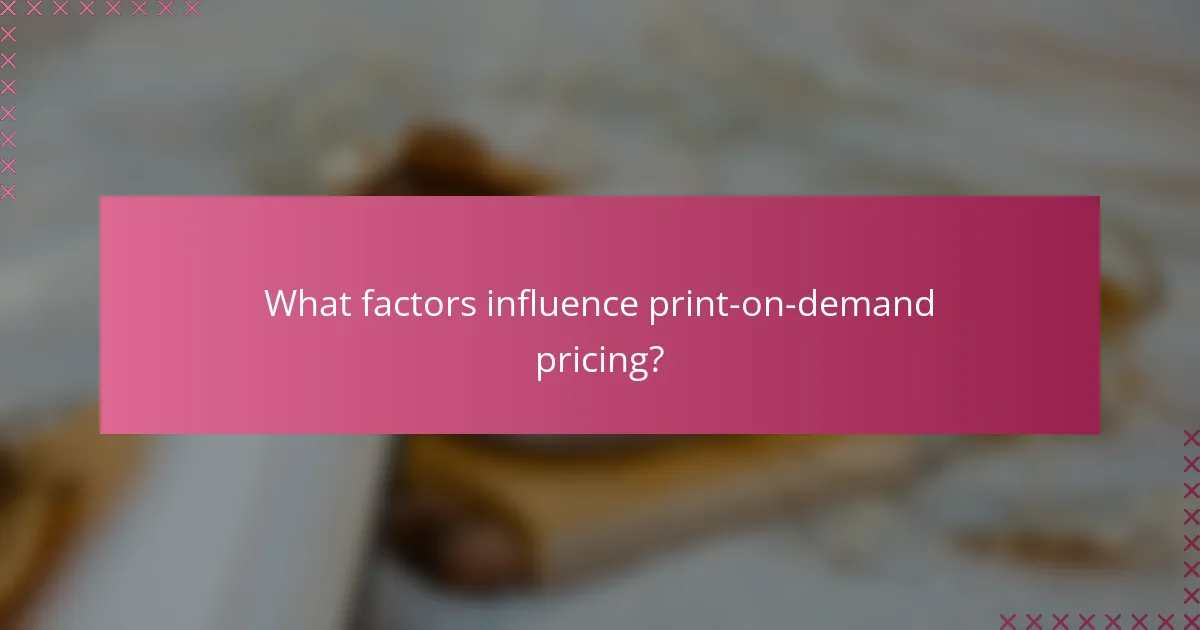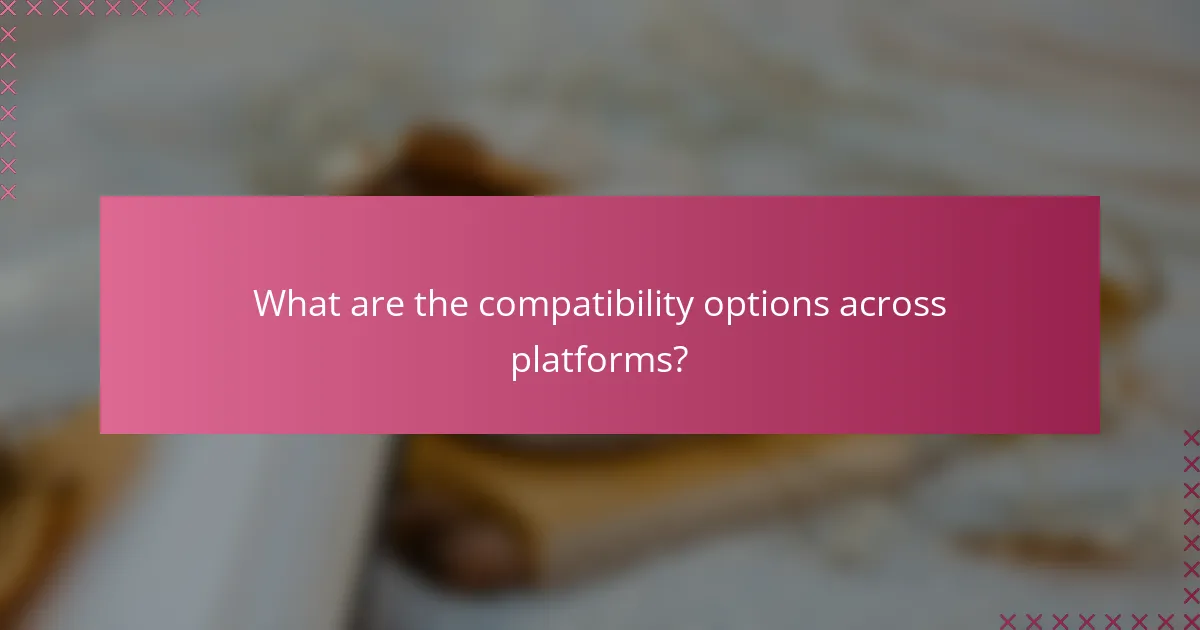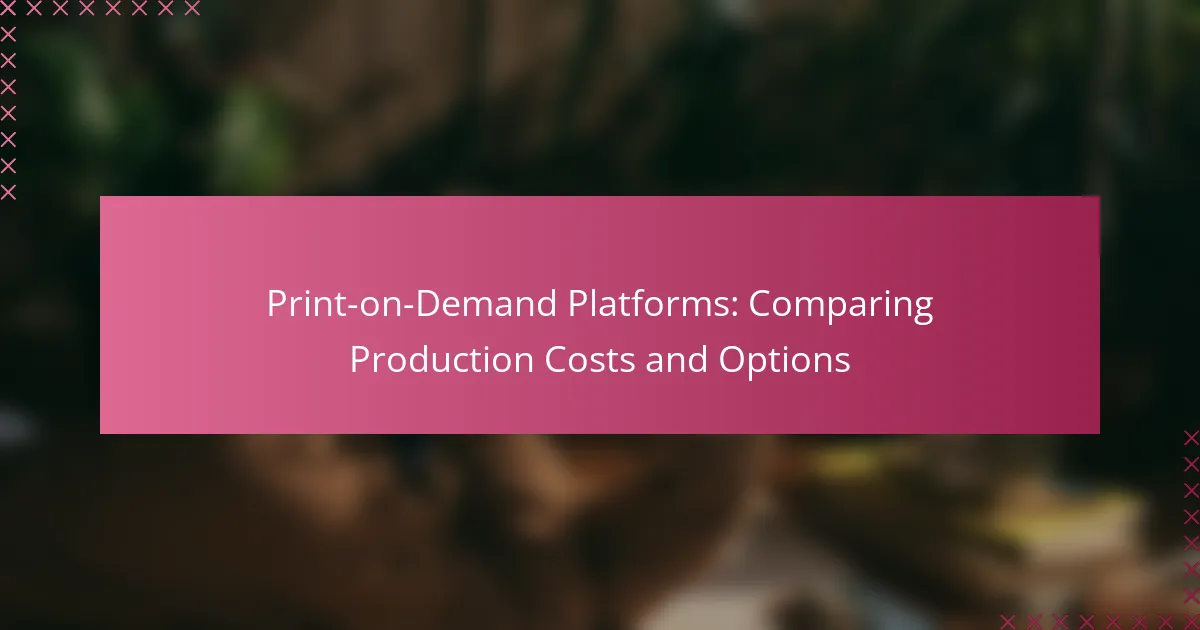When exploring print-on-demand platforms, it’s crucial to understand the varying production costs that can significantly affect your profit margins. Factors such as base prices, shipping fees, and customization charges play a vital role in determining overall expenses. Additionally, the type of product, materials used, and order volume can further influence these costs, making it essential to compare options carefully before making a decision.

Which print-on-demand platforms offer the best production costs?
Print-on-demand platforms vary significantly in their production costs, which can impact your profit margins. Key factors include base prices, shipping fees, and any additional charges for customizations.
Printful production costs
Printful typically has competitive base prices for a wide range of products, including apparel and home goods. For example, a basic t-shirt may start around $8, while shipping costs can add an additional $3 to $5 depending on the destination.
Consider that Printful also offers various printing techniques, which can affect costs. For instance, direct-to-garment printing may be more expensive than screen printing but offers higher quality for detailed designs.
Teespring production costs
Teespring, now known as Spring, has a straightforward pricing model with no upfront costs. Base prices for items like hoodies can start at approximately $20, and the platform allows you to set your own retail price to determine profit margins.
Shipping fees are generally included in the base price, but you should account for promotional discounts that could affect your earnings. It’s essential to calculate total costs to ensure profitability.
Gooten production costs
Gooten offers a variety of products with base prices that can be slightly higher than some competitors. For instance, a standard mug may cost around $10, with shipping fees ranging from $4 to $6 based on the delivery location.
Gooten’s flexible integration options can help streamline your sales process, but be mindful of the production times, which can vary. Always check their current rates and shipping policies to avoid surprises.
Redbubble production costs
Redbubble sets its base prices based on the product type and artist markup. For example, a sticker may have a base price of around $2, while apparel can start at $15. Artists can add a markup, which directly influences their earnings.
Shipping costs are typically added at checkout, and they vary by region. It’s crucial to factor in these additional costs when pricing your products to maintain a competitive edge.
Society6 production costs
Society6 has a unique pricing structure where artists receive a set percentage of the sale price above the base cost. For example, a framed art print may have a base cost of $30, and you can set your markup to earn more.
Shipping fees are generally calculated based on the total order value and destination. Be aware that the platform often runs promotions, which can impact your pricing strategy and potential profits.

How do production costs vary by product type?
Production costs for print-on-demand products can differ significantly based on the type of item being produced. Factors such as materials, printing techniques, and order volume all play a role in determining these costs.
T-shirt production costs
T-shirt production costs typically range from around $10 to $30 per shirt, depending on the quality of the fabric and the complexity of the design. Basic cotton tees are usually on the lower end, while premium materials or specialty printing techniques can drive prices higher.
When considering T-shirt production, it’s essential to factor in the printing method. Direct-to-garment (DTG) printing is popular for detailed designs but may have higher initial costs compared to screen printing, which is more economical for bulk orders.
Mug production costs
Mug production costs generally fall between $5 and $20 per mug, influenced by the material (ceramic vs. stainless steel) and the printing method used. Sublimation printing is common for vibrant designs, while vinyl transfer can be less expensive but may not offer the same durability.
For those looking to maximize profit margins, consider ordering in bulk to reduce per-unit costs. Additionally, be mindful of shipping fees, as these can add to the overall expense when sourcing mugs from different suppliers.
Poster production costs
Poster production costs usually range from $5 to $50, depending on size, paper quality, and printing options. Standard paper prints are more affordable, while canvas or specialty finishes can significantly increase the price.
When producing posters, consider the dimensions and whether you want a glossy or matte finish. Larger sizes may incur additional shipping costs, so it’s wise to compare local printing services to find the best deal.

What factors influence print-on-demand pricing?
Print-on-demand pricing is influenced by several key factors, including the base product cost, shipping fees, and customization options. Understanding these elements can help you make informed decisions when selecting a print-on-demand service.
Base product cost
The base product cost refers to the price of the item before any additional charges. This cost varies significantly depending on the type of product, such as apparel, home decor, or accessories. For example, a basic t-shirt may have a base cost ranging from $5 to $15, while a canvas print could start at $20 or more.
When comparing platforms, consider not only the base cost but also the quality of materials used. Higher-quality products may come at a premium but can lead to better customer satisfaction and potentially higher sales.
Shipping fees
Shipping fees can greatly affect the overall price of print-on-demand products. These fees vary based on the shipping method, destination, and weight of the package. For instance, standard shipping within the U.S. might range from $3 to $10, while international shipping could be significantly higher, often exceeding $20.
Many print-on-demand services offer bulk shipping discounts or flat-rate options, which can help reduce costs. Always check the shipping policies of each platform to find the most cost-effective solution for your needs.
Customization options
Customization options can impact both the base product cost and the final price. Services that allow for extensive customization, such as all-over prints or unique designs, may charge higher fees. For example, adding custom artwork to a product might increase the base cost by 20% to 50% depending on the complexity.
It’s essential to balance customization with cost-effectiveness. While unique designs can attract customers, ensure that the added costs do not price your products out of the market. Consider offering a range of customization levels to appeal to different customer segments.

How do shipping and returns work for print-on-demand?
Shipping and returns for print-on-demand services vary by provider but generally involve direct shipment to customers and specific return policies. Understanding these processes is crucial for managing customer expectations and ensuring satisfaction.
Shipping options for Printful
Printful offers a range of shipping options, including standard, express, and international shipping. Standard shipping typically takes about 3-7 business days within the U.S., while express options can reduce delivery times to 1-3 days.
For international orders, shipping times can vary significantly, often ranging from 5-20 business days depending on the destination. Printful provides tracking information for all shipments, allowing customers to monitor their orders in real-time.
Returns policy for Teespring
Teespring has a straightforward returns policy that allows customers to request a return within 30 days of receiving their order. However, returns are generally accepted only for defective or misprinted items, not for buyer’s remorse.
To initiate a return, customers must contact Teespring’s support team with their order details. It’s advisable for sellers to communicate this policy clearly to avoid misunderstandings and ensure a smooth customer experience.

What are the compatibility options across platforms?
Compatibility options across print-on-demand platforms vary significantly, affecting how easily you can integrate and manage your online store. Key factors include the ability to connect with e-commerce platforms, payment gateways, and shipping providers, which can streamline operations and enhance customer experience.
Integrations with Shopify
Many print-on-demand services offer seamless integrations with Shopify, allowing users to easily manage their products and orders. This compatibility enables automatic syncing of inventory and order details, which saves time and reduces errors.
When selecting a print-on-demand provider for Shopify, consider factors like the range of products offered, customization options, and fulfillment speed. Popular choices include Printful, Printify, and Gooten, each with unique features and pricing structures.
To ensure a smooth integration, follow these steps: first, install the print-on-demand app from the Shopify App Store; second, connect your Shopify account to the app; and finally, configure your product listings and settings. Avoid common pitfalls such as neglecting to test the integration before launching your store.
